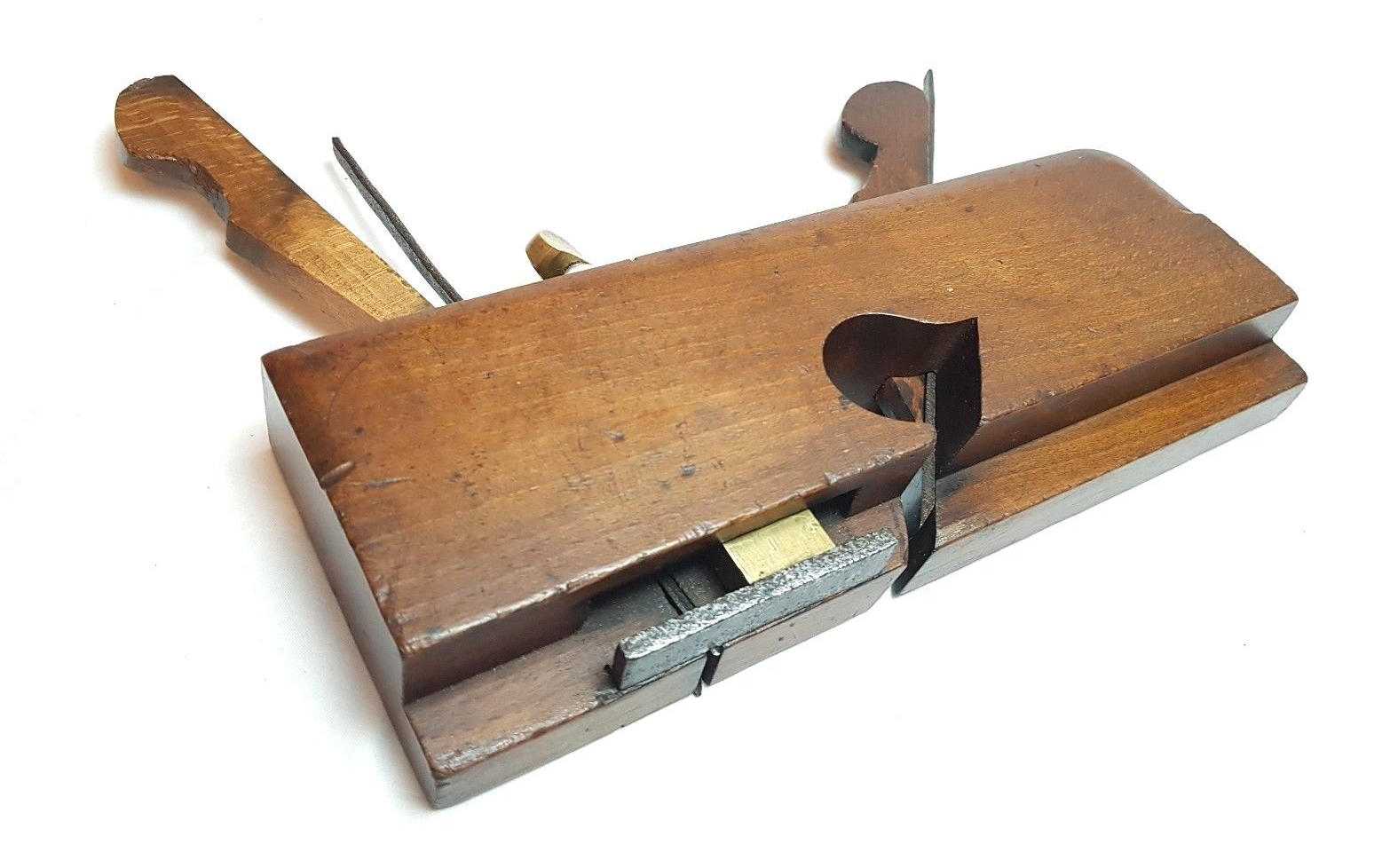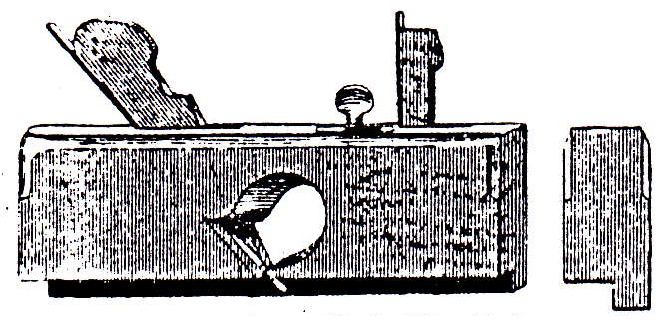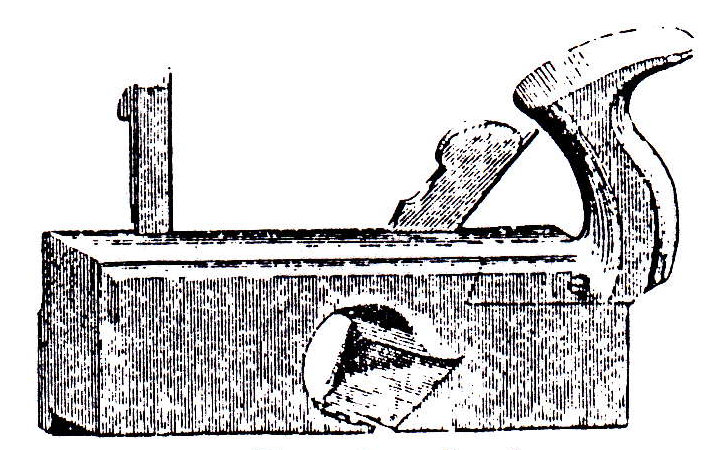
|
Note: This is a classic reprint from NEWS #010, April 1993
Also known as
- Dado
- Trenching
- Raglet
- Carcase Grooving
- Housing Plane
Related planes:
- Flooring Raglet
- Iron Dado Grooving
Definition see Salaman, R.A. Dictionary of Woodworking Tools, Revised edition, pages 324 & 325.
Salaman states this moulding size plane was rebated along the left hand side. In fact these planes were made left and right handed. I have used both right and left Cross Grooving planes and find them interchangeable. The original reason for this handedness is unknown.
Sizes range from ¼" to 1" rising in increments of ¹⁄₈". Larger sizes are known. The planes cut fractionally wider than the nominal size. Like plough sizes they are "full".
I prefer the term "cross grooving" as it provides an instant visual image. Trenching is probably the commonest term.
These planes. are provided with a depth stop. The common types are wood stop and brass thumb screw stop. The nicker iron is fractionally wider than the cutting iron. The blade is always skewed. This gives a clean cut and prevents the "eye" from clogging.
Cross grooving planes date from the late eighteenth century. The cutting action is clean and rapid. Correctly used it is a pleasant and efficient tool. In use a straight edge fixed to the work piece guides the plane. The plane can be used at 90° or any angle across the grain.
In appearance and execution these planes are superb. Only the Sash Filluter rivals the Dado as the triumph of the plane makers skill.
Uses
Trenching floor boards to receive tongued skirting in first class work. The handled flooring raglet was usually used for this purpose.
Trenching: Door jamb, linings etc. Skeleton linings, panelled jambs, solid jambs and dado panelling were cross grooved with this plane. Commonly ³⁄₈" or ½" size.
Trenching: Shutter stiles Stiles for shutters or louvred frames can be rapidly, and uniformly, cross grooved with this plane. As these stiles are handed left and right planes can take some of the awkwardness from the job. However one plane, of either hand is satisfactory. ³⁄₈" or ½" blades are common sizes.
Trenching: Pigeon Holes Large stationary units, e.g. office or bank fitments were cross grooved with this plane. Also used to cross groove strong boxes etc. Not to be confused with stationary units in cabinet work where the divisions are V grooved. Sizes 1¼", ³⁄₈".
Trenching: Carcase or Bookcase sides Used for cabinet work. Common sizes ⁵⁄₈", ¾", ⁷⁄₈". Often seen in chest of drawer sides, bookcase sides for adjustable shelves and grooves for rays on fined clothes presses etc.
It should be noted that these planes cut through trenches. However the bulk of stopped cross grooves can be worked with these planes.
The full potential of the cross grooving planes is a reflection of the user’s imagination. The great advantage of these planes is the amount of setting out which is eliminated combined with the speed of use.
Stanley USA made iron versions of this plane.

|

|
